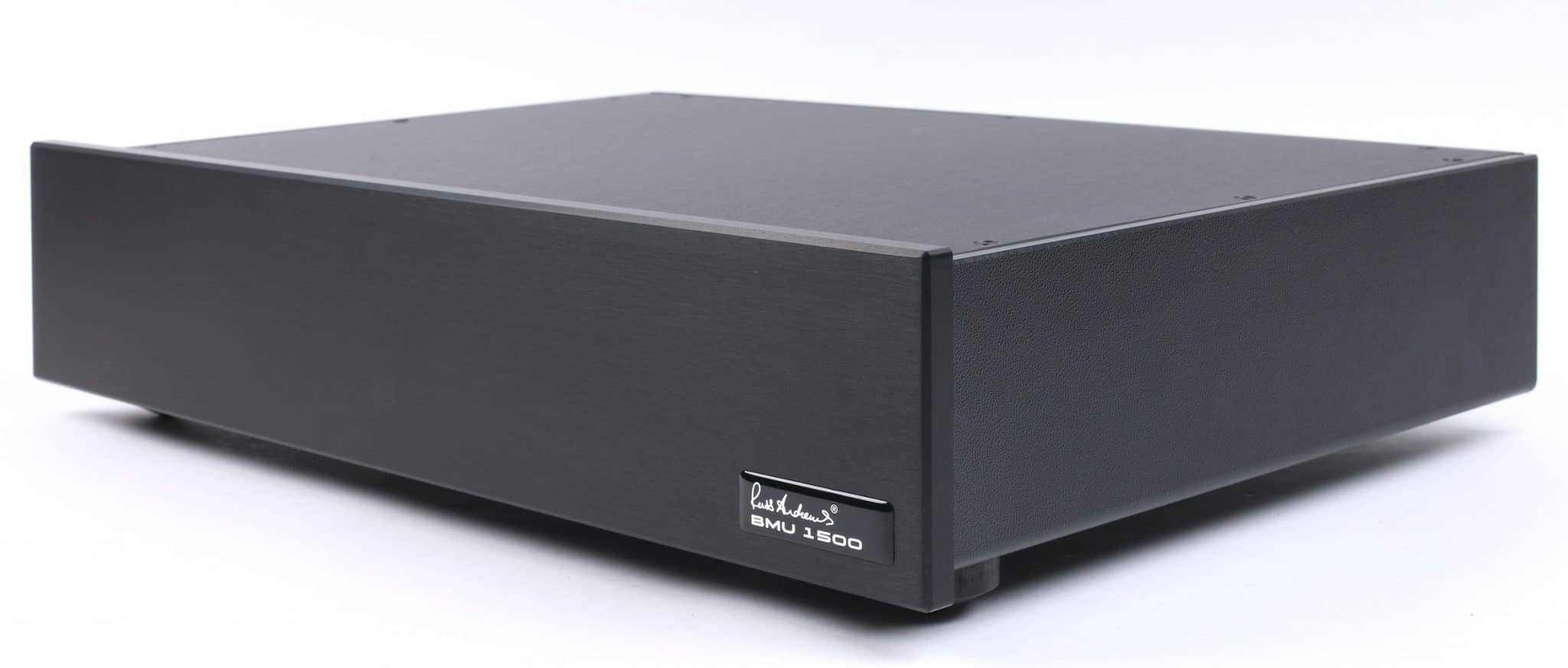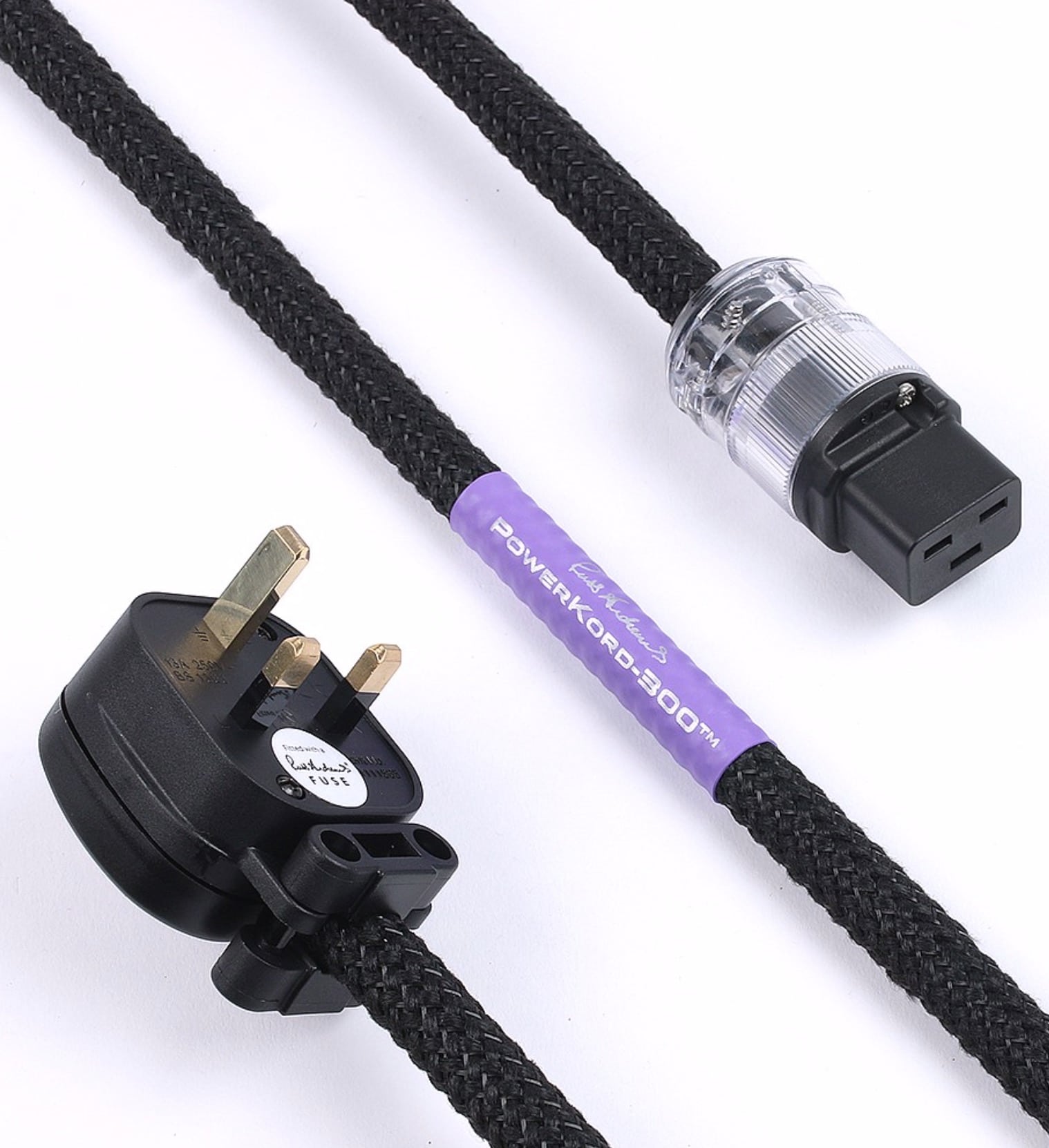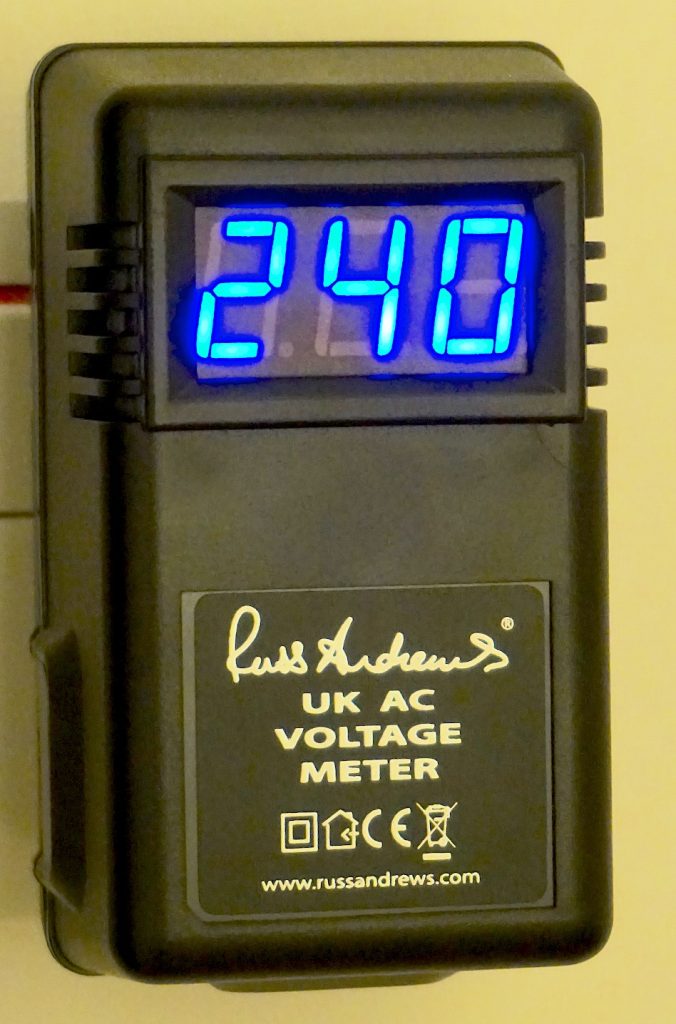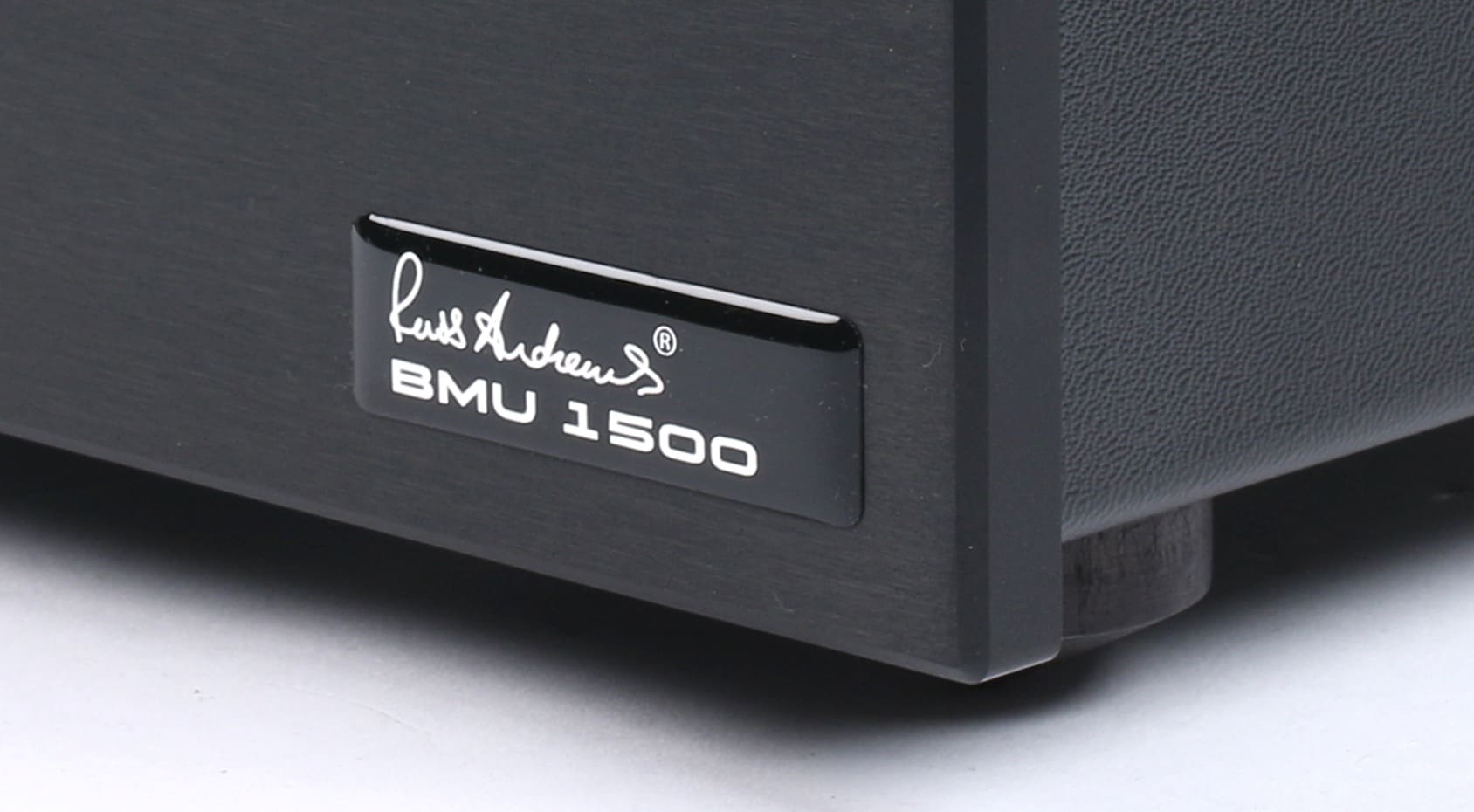The Article
BMU1500 Mk.II From Russ Andrews
11th March 2019

Want to give your hi-fi’s mains supply a bit of personal attention? Paul Rigby wonders if he can reduce mains noise with a Russ Andrews BMU1500 Balanced Mains Unit
I’m sure you’re aware of balanced audio. These connections can be found on the back of a gamut of components from pre-amps to CD players. The Internet is full of in-depth explanations of balanced technology but, in very simple parlance, the audio signal is split into two halves; negative and positive. This approach can then remove noise and distortion from the mains by out of phase noise cancellation. The sound output is certainly different from a balanced connection. If implemented properly, the sound can be vastly improved when compared to a single-ended cable.
The BMU1500 MkII also split signals. In this case, though, it’s the mains signal which is divided into two separate supplies. One is carried on the live and the other on the neutral. Each is a different polarity (negative or positive) which is useful if you want to reduce the noise in your hi-fi system because any noise found on one side is effectively (well, this is the promise of the thing) cancelled out by the noise on the other. The bottom line? Hopefully, a clean mains supply. It’s an attractive proposition.
I’ve actually reviewed a Balanced Mains Unit from Russ Andrews before and I liked it very much. This one has been improved, though.
When I mentioned the word “personal” within the introduction, I wasn’t kidding. If you want to buy one of these things, you will need to measure the voltage running through your house and the final Unit will be tweaked for your own electricity supply.
By law, your electricity supply has to be 230V +10% -6%, giving a minimum of 216.2V and a maximum of 253V. If you have a Balanced Mains Unit set to 220V, say, and the electricity supply generally runs at 250V then your supply will not be running at an efficient rate and sound quality may suffer because of that.
This is why Russ Andrews supplies you with a simple to use, plug in, mains voltage checker before purchase (see above). I tested one of these things. All you do is plug the thing into a mains socket and the readout immediately responds with your current voltage rate. That’s it. Well, that’s not quite ‘it’. You need to take readings over seven days because voltage can vary depending on the time of day or what devices you’re using. Hence, you need to jot down seven day’s worth of figures and then you need to take an average. That average figure should then be sent to Russ Andrews and then they’ll tweak your Balanced Mains Unit to that figure.
The latest unit is also equipped with a newly-designed balanced mains transformer, which is quieter in operation (the older one did hum and buzz a bit), to provide the total 1.5kVA of power. You get five Russ Andrews UltraSocket mains outlets on the rear so that chassis also acts as a mains extension too. I had a slight issue here. Light and slim mains cables plugged into the UltraSockets were fine but larger and bulky cables and plugs never quite sat right. Almost. Just not quite. This was because the sheer weight of the cable length pulled at the plug. This did prove to be an issue when the BMU1500 was positioned behind a busy looking hi-fi system with cables floating all over the place, a common situation. That is, it was easy to knock a plug sitting in an UltraSocket, disconnecting the signal.
To solve the situation, I recommend that you position the unit on its own shelf, away from other cables and the floor and route any thick cables carefully to allow them to enter into the BMU1500 straight on, as it where and not pushed, bent or manhandled into position.
Mains input is via a 16A IEC socket that is protected by a two-pole (live and neutral) circuit breaker. The whole thing is set into a bespoke ABS case with black anodised front panel. In use, I began by adding my two power monoblocks, a pre-amp, a phono amp and turntable (you can plug any component into any socket – they’re not individually rated). I then swapped the turntable and phono amplifier with my CD player and DAC to vary the sources. So what does it sound like?
SOUND QUALITY
I began with Nina Simone and And Piano! and the track Who Am I which is basically all about Simone and the keys. Simone was a genuis. A true artist. And a scary woman. Rumour has it she walked around with two body guards…to protect the public from her! That sense of unpredictability and probable chaos comes through her piano style which sparkles and sizzles and snaps. You don’t know what key will be hit, when and how hard. Any hi-fi tracking this song has to be on its toes. There’s lots of space around this performance with reverb floating all over the place. So veiling noise is not welcome here at all.

Simone had that sort of spiky, slightly aggressive, don’t get in my way, persona. That comes over in many of her songs. I say all of this because a quality hi-fi will not just track the song but will convey the singer’s personality. In this track, there’s a distinct, well, threat. That sort of subtlety is what you pay for in expensive hi-fi kit.
This was also a tough ask for the BMU1500. Mostly because my system is encrusted with anti-noise cables, power blocks, isolation accessories and more. I’ve gone to some lengths (and then a bit further), to minimise all noise. So here, the BMU1500 is walking into a pretty tip top, clean environment.
Powering the BMU1500 into my system did change things, though. My first impression was the focus on the piano. It sounded full and rich. There was a host of subtle tonal information that ran alongside the usual piano-type noises. These new effects added a sense of strength to the struck piano keys, they told me that this piano was a substantial thing, they said that the notes that flew from it were powerful and that the whole ensemble was big and had a sense of grandness. A Grand Piano is not called that for a joke, you know. On the right hi-fi, you can certainly hear that immensity. The BMU1500 gave me all of that.
Then there was the vocal. When I removed the BMU1500 from my system the sound had a thin quality. One that I’d never noticed before. By thin, I mean the sounds were not properly rounded. There was a lack of low frequency information added that gave each sound a balanced sound. Even higher frequency sounds had a tiny amount of bass information to round off the sound, to give it a proper flavour. That’s what the BMU1500 gives you, a rounded sense to sound. Hence, during the review, with the BMU1500 attached once more, Simone’s voice had a depth, a richness and a host subtle sounds, rasps and other vocal ticks that set her apart from a machine, say. That human-esque quality. One that’s full of micro mistakes, that gives a vocal performance emotion and brings you to the brink of tears. That kind of thing.
On a more dynamic track, I played Barclay James Harvest and Negative Earth from Everyone is Everybody Else (Polydor). Now rock is all about bass and lower frequencies so what could the BMU1500 add to a track like this? In a word, authority. I know it’s difficult to envisage but the guys behind the instruments sounded more confidant. You felt that these guys had done this before, they weren’t rookies. The lead vocal was smoother and flowed very easily, drums rolled by with no effort, guitars seemed packed with electricity and the new found space and midrange insight meant that the subtle tambourine taps were much more evident. I’ll go further. Before, I could just about hear the tambourine. Now, I could hear three distinct taps but the third tap had an extended reverb. There was obviously a touch more effort placed upon that one.
I then moved to CD and played Bing Crosby’s Bing With a Beat, featuring Bob Scobey’s Frisco Jazz Band and the track Let A Smile be Your Umbrella.
If the lowering of noise could be heard anywhere then it was here, my digital source, that benefitted the most. Noise here can easily be heard as an edgy midrange, especially the upper frequencies. I normally have to plug in a host of CAD GC1 cables to lower the noise to remove listening fatigue. Yet, even with the CAD GC1 not plugged in, the BMU1500 reduced noise enough to make listening to my CD and DAC a complete joy. The effect was to allow Crosby’s rich baritone to exude texture and emotion, the brass – often pinched and nasty in tone – to produce a rich and nuance presentation and enough new space to allow the piano to shine.
CONCLUSION
Even on my heavily treated system, I could hear the differences. That tonal balance was everything. It was a bit like an artist completing a picture. That’s what the BMU1500 did, it finished off the sonic image, giving a more recognisable and realistic portrayal of the performance. The BMU1500? Every home should have one.
BMU1500 BALANCED MAINS UNIT
Price: £2,550
Tel: 01539 797300
Website: www.russandrews.com
Good: tonal balance, low noise, midrange insight, clarity, five socket selection
Bad: socket strength
RATING: 8
[Don’t forget to check out my Facebook Group, The Audiophile Man: Hi-Fi & Music here: www.facebook.com/groups/theaudiophileman for exclusive postings, exclusive editorial and more!]
REFERENCE
Origin Live Sovereign turntable
Origin Live Enterprise 12″ arm
Van Den Hul Crimson XGW Stradivarius Cartridge
Soundsmith Paua Mk.II cartridge
Icon PS3 phono amplifier
Aesthetix Calypso pre-amp
Icon Audio MB845 Mk.II monoblock amplifiers
Quad ESL-57 speakers with One Thing upgrade
Tellurium Q Silver Diamond cables
Blue Horizon Professional Rack System
Harmonic Resolution Systems Noise Reduction Components
All vinyl was cleaned using an Audio Desk’s Ultrasonic Pro Vinyl Cleaner








Hi Paul,
I use an Australian made Thor PS-10 Power Conditioner and Stabilizer after having a brand new DAC fritzed by a voltage spike when the power came back on after an outage. I have experienced the samed results as mentioned in your article. As well as peace of mind it adds silence as well as nuance and body to the music (if you can add silence lol) and has made my whole digital listening experience much more enjoyable.
Thanks for your thoughts, Ian.
Hi Paul. Enjoy receiving your thoughts on new products and your approach to noise reduction. I have numerous such items in my system to tackle vibration and improve the mains supply. Your mention your own system is heavily treated in this regard…what exactly are you using and to what effect have they addressed the issues you wanted them to? I have found some items to be most effective (Russ Andrew’s Power Purifier and Isoacoustics feet being two) but others have delivered no performance gains whatsoever (Ringmat’s Statmat and Milty’s Zerostat on CD’s being another two). Cheers.
Good man, Andy – glad to see you’re tackling noise. Yes, not everything has a tremendous effect and sometimes your particular hi-fi system has a say in that, as does the house and area you live in, you have a different mains supply to mine because your location makes it unique (i.e. because of the infrastructure around you, the street lighting, the neighbours, etc). Different things work for different people, I’m afraid. It’s not a silver bullet thing. You have to experiment. This is where reviews come in useful but, saying that, some things that work for me might not work for you and vice-versa. The Zerostat *does* work. In a practical sense, I’ve tested it with an anti-static meter and have seen the static removal but the effects are not as great as a Furutech DeStat, for example (again, on a practical level, I’ve seen the figures on an antistatic meter). I wonder if you might be better going for the latter? It is pricey but, in my opinion, worth it. I noticed a more improved sonic difference over the Zerostat. I have also ever really got along with the Ringmat products. They’re ok and fine for what they are but I’ve found other products that do a more efficient job.
Me? Brace yourself…It starts with the room itself, as you can see here: https://theaudiophileman.com/damping/.
I have a wooden floor with rugs. I make sure they’re wool to reduce man made fibre static. The shelving I have features isolation materials in them. One is from Blue Horizon (https://theaudiophileman.com/professional-rack-blue-horizon-review/), Hush supports under my floor-mounted monoblocks (not the rack as seen here, just the supports: https://theaudiophileman.com/hush-equipment-rack-oak-version/) – the other I’ll need to find the name, not next to it at the moment. I use high quality cabling and power blocks from Tellurium Q and Vertex AQ (https://theaudiophileman.com/vertex-hi/), both aimed at lowering noise. This next one goes on a shelf but under my pre-amp (https://theaudiophileman.com/4325-2/). The damping plates and turntable stabiliser from this lot is used (https://theaudiophileman.com/4325-2/). These go under my turntable (https://theaudiophileman.com/orea-indigo-isoacoustics-review/) with these under the turntable motor (https://theaudiophileman.com/alto-extremo-lyd-ii-isolation-review/) and other components (https://theaudiophileman.com/iso-pod-isolation-feet-voodoo-review/). I use these Furutechs for my cables (https://theaudiophileman.com/furutech-booster-signals-cables-review/) and the lifts seen in this review too, because I couldn’t afford more Furutechs (https://theaudiophileman.com/styx-lifts-cables-titan-audio-review/), a couple of these plugged into the pre-amp and phono amp (https://theaudiophileman.com/cad-ground-control-review/), this plugs into my pre-amp’s Ground socket (https://theaudiophileman.com/ground-master-puritan-review/) and I use this on my vinyl and particular valves on my power amps and phono amp (https://theaudiophileman.com/destat-iii-static-furutech-review/). I might have missed one or two. Sorry for the list – you did ask 🙂
Cheers for that Paul…very comprehensive. We share the Isoacoustics feet – the new Bronze models for lighter components under my CD player have surpassed my expectations and I was impressed with the Gaia’s under my speakers. I have just spent the afternoon fitting some (more) GIK panels in what is a very small listening room and first impressions are very good. A prolonged blasting is in the offing! I may have to dig out the Zerostat again (when I can find where its gone post-house move). It certainly does work as you say which the nylon on arm trick testifies…I just never found it effective on CD. But now that I have a more revealing system of Naim Supernait 2, CD5XS and B&W805D3’s the results may vary. I saw the grounding products you suggest at Bristol last month so may give those a try, possibly the Russ Andrews version given the 60 day trial period. Anyway, thanks again and all the best.
No problem, Andy. I hope you find the right ancillaries you need.